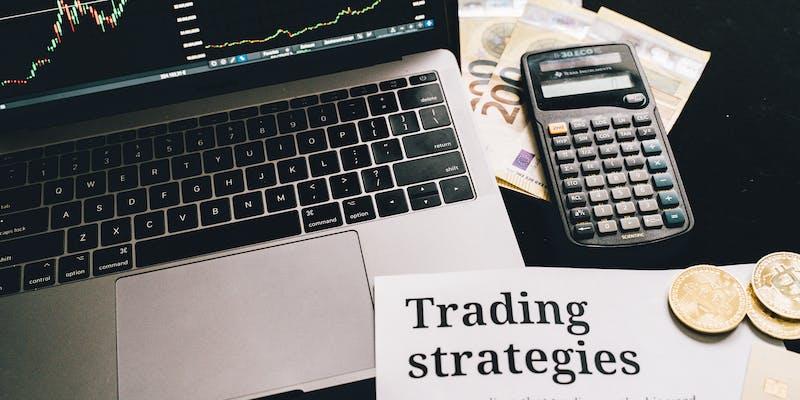Investment in gold has grown exclusively recently. In 2022, global gold demand rose 18%, the fastest rate in over a decade, according to the World Gold Council. With this unprecedented demand, gold has risen above $2,000/oz, approaching its 2020 peak.
Gold's investment appeal is clear. As one of the most enduring forms of currency, gold maintains its value even when other assets falter. Gold often remains stable when the dollar weakens, and stock markets decline. This stability is crucial for protecting investment portfolios, especially during financial uncertainties.
Understanding why gold is a good investment is crucial. In addition to choosing the best investment portfolio mix, you must build a portfolio that can withstand market fluctuations. Gold can boost your portfolio's resilience, a key investment portfolio analysis factor.
Why You Should Buy Gold?

Gold as a Defense Against Inflation
Traditionally, gold has been a reliable shield against inflation. Its value tends to escalate in times of rising living costs. Gold prices have soared during high inflation, in contrast to stock market downturns, as witnessed during the previous fifty years. Gold naturally rises in value when fiat currencies lose buying power due to inflation. The rationale is straightforward. Gold is also considered an excellent store of value. It becomes a preferred choice for investors seeking to preserve wealth when they perceive their local currency as diminishing value.
Safeguard Against Deflation
A price decline, a slowdown in business activities, and a heavy debt load on the economy characterize deflation. This phenomenon was last experienced globally during the Great Depression in the 1930s, though some regions witnessed a mild deflation after the financial crisis in 2008. During such periods of deflation, gold's value in terms of purchasing power often escalates significantly. This is attributed to the tendency of people to hoard cash during such times, and historically, gold and gold coins have been perceived as secure repositories for cash.
Stability Amidst Geopolitical Strife
Gold's value is not only recognized during financial turbulence but also in periods of geopolitical unrest, often referred to as the "crisis commodity," gold becomes a go-to asset for its perceived safety when global tensions escalate. In times of geopolitical instability, gold has frequently outshined other investment options. Its value typically experiences a significant upswing when the public's confidence in governments and political stability is shaky.
Gold Supply
Since the 1990s, a significant portion of the gold market supply has been sourced from the sale of gold bullion held in the vaults of global central banks. This trend of selling by central banks noticeably decreased in 2008. The concurrent decrease in new gold output from mines started around 2000. According to BullionVault, gold mining output declined to 2,444 metric tons in 2007 from 2,573 in 2000. After a surge to 3,300 metric tons in 2018 and 2019, production dipped to 3,000 in 2021. The latest fall may suggest a global gold shortage. Notably, operationalizing a new gold mine can take five to ten years. Generally, a decrease in gold supply tends to lead to an increase in gold prices.
Rising Demand for Gold
In recent years, the growing wealth in emerging market economies has amplified the demand for gold. Gold holds a significant cultural value in many of these countries. For instance, in China, where gold bars are a customary method of saving, the demand for gold has been consistently strong. India ranks as the second-largest consumer of gold globally, with gold being integral to various cultural practices, including jewelry. The Indian wedding season, which peaks in October, typically drives the highest global demand for gold annually.
Gold investors' interest has also increased. They are realizing the importance of commodities, especially gold as an investment. An example is the SPDR Gold Trust (GLD), one of the largest and most traded US ETFs.
Diversification Through Gold
Diversification in investment is about choosing assets that don’t move in tandem. Historically, gold has negatively correlated with stocks and other financial instruments. This has been evident in various periods:
- The late 1970s were favorable for gold but not for stocks.
- The 1980s and 1990s saw a boom in the stock market but a downturn in gold.
- In 2008, as stocks plummeted, there was a noticeable shift towards gold.
Investors aiming for diversification often include gold alongside stocks and bonds to mitigate overall volatility and risk.
Determining the Right Amount of Gold for Your Portfolio

When incorporating gold into your investment portfolio, financial experts typically suggest a 5-10% limit. This allocation strategy ensures that your portfolio has enough space for other asset classes, such as securities. Unlike gold, income-generating assets can contribute to the growth of your savings over time through compounding, as gold only realizes its financial value when sold.
Investing in gold can also be approached indirectly. One way to do this is by purchasing stocks in gold mining companies or investing in mutual funds or ETFs with gold-backed assets. This method has its perks, giving you ownership stakes in these entities and earning you dividends. This is a notable advantage over investing in physical gold, which does not generate passive income.
However, remember that investing techniques may not work for everyone. The financial circumstances and aspirations of every person are distinct. Imagine you're considering adding gold to your portfolio but don't know how. However, an independent financial professional like a certified financial planner (CFP) may provide customized advice based on your position and objectives.
Understanding gold's role in this scenario is crucial for building an investment portfolio. It highlights how gold becomes a valuable asset in times of economic downturn. The best investment portfolio mix often includes gold as a hedge against deflation. Keeping this in mind can be essential for investment portfolio analysis, ensuring a balanced approach to asset allocation even in challenging economic conditions.




